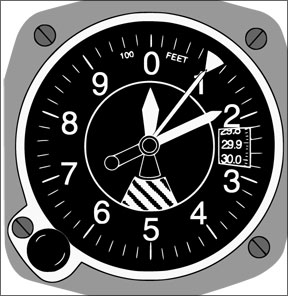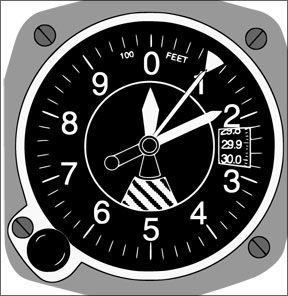Expectations can force the eye to see what the mind wont parse. My lesson in this human frailty occurred when I was taking an end-state instrument student out into some real weather, which he had been pestering me do for weeks. The trip was a short one, from a central Connecticut airport, across Long Island Sound to Islip, then Westhampton Beach and back home again. A nice easy 90 minutes with four or five approaches. The weather was horrid, but perfect for IFR training. A late-winter warm front had moved in over the still snow-covered ground 288 to produce uniform ceilings of 300 to 500 feet in a couple of miles of viz. Tops were widely reported at 3000 feet and since Id seen these exact conditions before, I knew what to expect. Link one: The lesson was a rushed after-work affair and I was pushing to get it done before full dark. I dont mind night IFR, but not in a Cherokee with no backup vacuum, thanks. We slammed together a briefing, filed a flight plan, got into the airplane and picked up a clearance while the engine warmed. Link two: The Mode-C had been flagged intermittent but, as is often the case, the avionics shop couldnt track it down so the airplane went back on the line. In those days, flying with a questionable Mode C wasnt the mortal sin that it has become today. Link three: The AWOS was busted and with no tower, we set the altimeter to the local field elevation and (link four) didnt find it odd that the altimeter read exactly at field elevation, even though we both knew the airplane hadnt flown that day because of the weather. Link five: Because my student was all sweaty-lipped about his first venture into low IMC, I blew off the internal time-clock cues telling me we seemed to arrive at 3000 feet awfully quickly and (six) I made a note to do a PIREPS on the tops, which were clearly much higher than 3000 feet. Those 32 other PIREPS must have been wrong. Link seven: When approach couldnt tag up the radar as we reached 3000 feet-like they always had-I assumed it was the Mode C acting up again. And, lets see-Im running out of fingers here-link eight had to do with being over Long Island Sound and having the controller question the 2000-foot Mode C trace. Twice. The chain finally snapped when we actually checked the altimeter setting. It was a full inch too high. Only by the good graces of coastal geography and the lack of a nice site for a 1700-foot radio television tower had we avoided becoming an NTSB footnote asking, “What were these guys thinking?” What about the checklist, you ask? However good or bad a written checklist is, it does nothing for the human tendency toward confirmation bias-if you see what you expect to see, you see it and move on. Both my student and I saw the big needle on the 727-foot field elevation and that was good enough. Checklists, habitual careful double checking and a sixth sense for survival are all terrific. But sometimes, its just better to be lucky.




